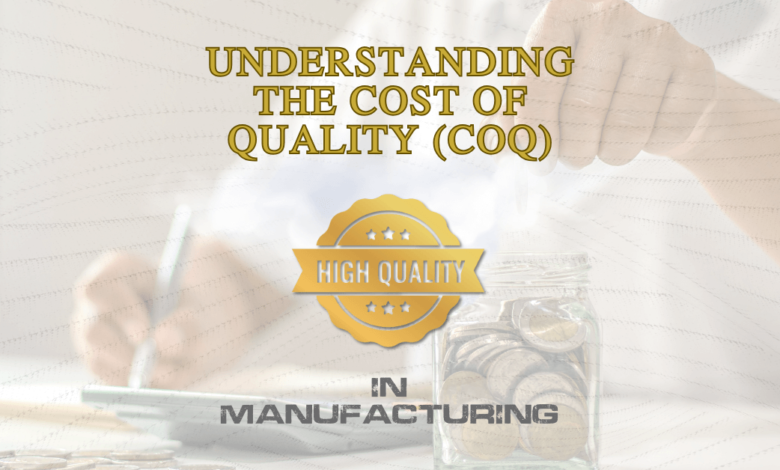Understanding the Cost of Quality in Manufacturing

The Cost of Quality in Manufacturing (CoQ) refers to the total cost of ensuring product quality, as well as the costs associated with poor quality. Rather than being limited to the cost of producing high-quality goods, CoQ includes all the activities that prevent, detect, and correct defective work.
Understanding and analyzing CoQ helps manufacturers identify where to allocate resources for quality improvement and achieve better financial performance.
Why the Cost of Quality Matters
Tracking the cost of quality allows organizations to:
- Identify inefficiencies in processes
- Justify investments in preventive measures
- Reduce the cost of rework, returns, and customer dissatisfaction
- Drive continuous improvement and profitability
Categories of Cost of Quality
CoQ is typically broken down into four categories:
1. Prevention Costs
These are costs incurred to avoid defects in products or services. Examples include:
- Quality training programs
- Preventive maintenance
- Process control implementation
- Quality planning and audits
2. Appraisal Costs
These costs are associated with measuring and monitoring product quality during manufacturing. Examples include:
- Inspection and testing
- Calibration of measurement equipment
- Internal quality audits
- Supplier assessments
3. Internal Failure Costs
These are costs resulting from defects detected before the product reaches the customer. Examples include:
- Rework
- Scrap and wasted materials
- Equipment downtime due to quality issues
- Investigation and root cause analysis
4. External Failure Costs
These occur when defects are found after the product has been delivered to the customer. Examples include:
- Warranty claims
- Product recalls
- Returned goods
- Legal liability
- Loss of customer trust
Calculating the Cost of Quality
To calculate CoQ, categorize all quality-related expenditures and assign them to one of the four types. A standard CoQ formula:
CoQ = Prevention Costs + Appraisal Costs + Internal Failure Costs + External Failure Costs
By evaluating each component, organizations can better understand where their quality dollars are going and prioritize improvement opportunities.
Benefits of Measuring Cost of Quality
- Highlights the financial impact of poor quality
- Encourages investment in prevention rather than correction
- Enables data-driven decision making
- Reduces total cost of operations over time
Implementing a Cost of Quality Program
To implement an effective CoQ tracking system:
- Identify all quality-related costs in your production process
- Assign each cost to a CoQ category
- Use tracking tools (such as spreadsheets or ERP software) to monitor CoQ over time
- Analyze trends to find areas of improvement
- Invest in prevention to drive long-term savings
Final Thoughts
The cost of quality in manufacturing is not just about how much you spend to maintain high standards—it’s about recognizing the full cost of not doing things right the first time. By understanding, measuring, and managing CoQ, businesses can significantly improve both product quality and bottom-line performance.

Ronnie Lee Roberts II has worked in the Department of Defense (DoD) quality space since 2017, supporting programs at Patuxent River and Webster Field (NAWCAD/NAVAIR). He has worked as a certified AS9100:2016 Rev D Lead Auditor (2022-2025), ISO/IEC 20000-1:2018 Lead Auditor (TPECS [2023]), and a Certified CMMI® Associate (2025) with experience supporting CMMI-DEV Level 3 environments. His expertise spans technical writing, document control, CAD design, logistics management, and quality control. Ronnie specializes in inspecting to specification, ensuring contract compliance, and preparing teams for success in high-stakes, audit-ready environments.




